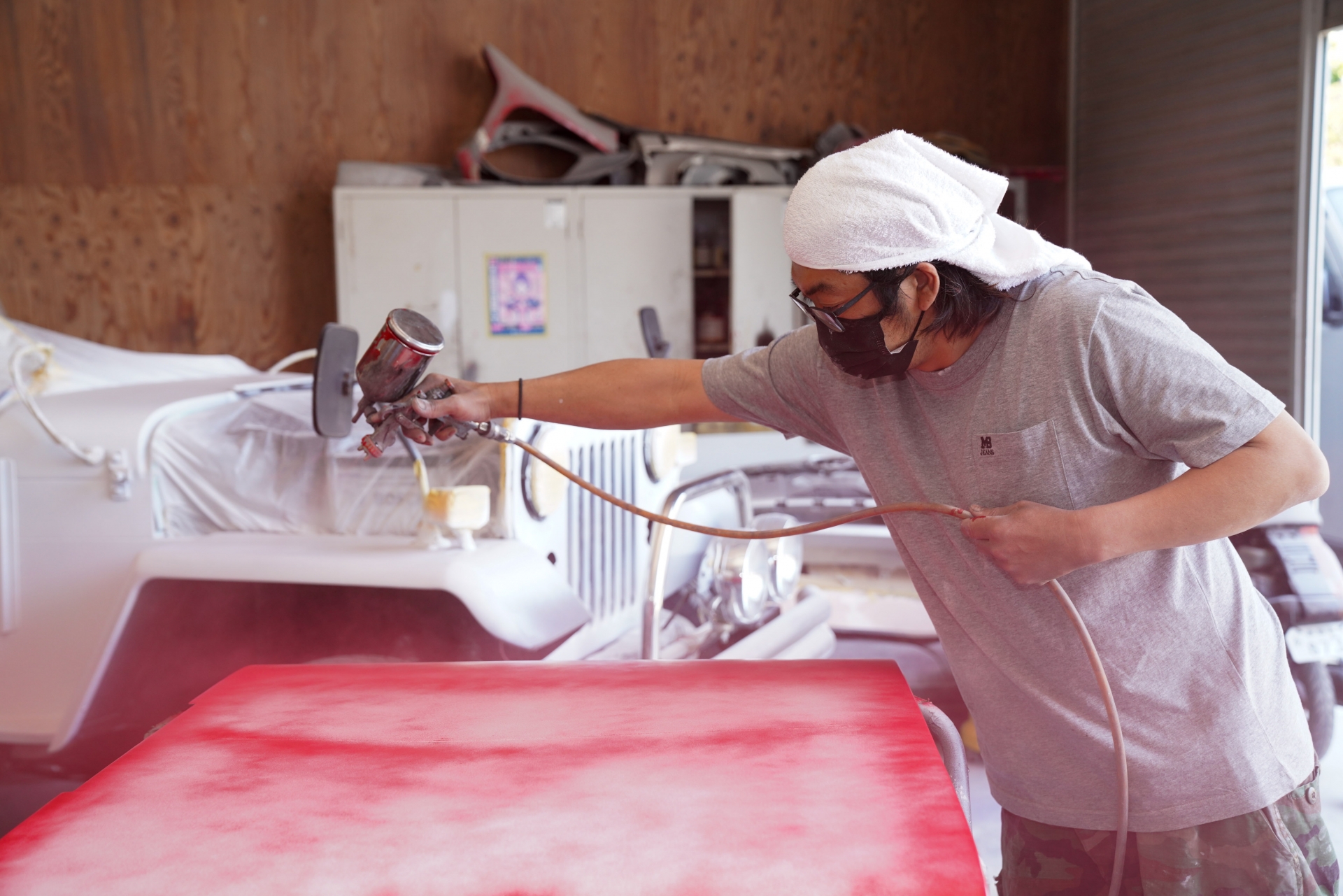The secret of the Ferrari paint, Rosso Corsa
Rosso Corsa. These Italian words mean the signature red color of Ferrari. When I was into Ferrari, I heard some myths about color mixing to realize Rosso Corsa. Some said the color of the primer (base coat) must be yellow to realize the passionate red, while others said it was just pink to develop the surface red brighter. It was still the dawn of the Internet, and I just enjoyed such dubious rumors. One day, I came across a book reporting the restoration of 365BB (a classic Ferrari car), and saw a picture of the signature red layer peeled off. Under Rosso Corsa was just greenish gray, the common color of primer. I learned truth is not stranger than fiction.
Since then, I have become interested and studied a little about car painting. As you may easily be able to imagine, the painting process of automobile factories is under automation and strict dust-and-humidity control. It’s completely different from a small workshop where a master painter runs a spray gun in an unstable environment depending on the weather. Furthermore, paint itself is different. The one used in automobile factories is a thermosetting type. The painted car bodies are put into an oven to be heated at more than 150 degrees Celsius, which is not going to happen in small workshops. We can never get back the new car paint condition once it is damaged. Do you still want to paint a whole car door only for a tiny scratch?
The more you want the less you get
In the first place, I think it’s meaningless to expect flawless, perfect conditions for things that have form. They will all disappear over time anyway. Indeed, makers are obliged to guarantee a perfect condition at least at the time of shipment from their factories, but there’s a limit to everything. Especially, it’s obvious for products made from natural materials, like our furniture made of wood and leather. This can be said to be the matter of definition. What is perfect wood, perfect leather? Having said that, we continue to throw away a lot of wood and leather to avoid customer complaints, in fact.
I’m sure it’s tough for any makers to throw away such materials. It’s not only because of cost consciousness but because we makers completely understand the true value of materials, and that there’s no big difference in value between standard and non-standard materials. This is the reason why we always consider the effective use of waste materials. One day, I found an interesting article about a facility to support people with disabilities. The facility staff learned many waste clothes were produced from hemming up pants in UNIQLO, and asked to hand over the waste clothes. Wonderfully enough, UNIQLO kindly agreed.

Inspired by the article, I soon contacted the facility, hoping they may allow us to donate our waste leather and fabric for their products. To my joy, their answer was “Yes.” It would take some more time for them to be prepared for production using leather, and so, I’ve promised to provide our know-how of leather processing as well. How do you like their bags made of waste fabric from UNIQLO and our waste luxury leather?


Shungo Ijima
He is travelling around the world. His passion is to explain Japan to the world, from the unique viewpoint accumulated through his career: overseas posting, MBA holder, former official of the Ministry of Finance.

